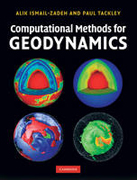
Written as both a textbook and a handy reference, this text deliberately avoids complex mathematics assuming only basic familiarity with geodynamic theory and calculus. Here, the authors have brought together the key numerical techniques for geodynamic modeling, demonstrations of how to solve problems including lithospheric deformation, mantle convection and the geodynamo. Building froma discussion of the fundamental principles of mathematical and numerical modeling, the text moves into critical examinations of each of the different techniques before concluding with a detailed analysis of specific geodynamic applications. Key differences between methods and their respective limitations are also discussed - showing readers when and how to apply a particular method in order to produce the most accurate results. This is an essential text for advanced courses on numerical and computational modeling in geodynamics and geophysics, and an invaluable resource for researchers looking to master cutting-edgetechniques. Links to supplementary computer codes are available online. INDICE: Foreword; Preface; Acknowledgements; 1. Basic concepts of computational geodynamics; 2. Finite difference methods; 3. Finite volume method; 4. Finite element methods; 5. Spectral methods; 6. Numerical methods for solving linear algebraic equations; 7. Numerical methods for solving ordinary differential equations; 8. Data assimilation methods; 9. Parallel computing; 10. Modelling of geodynamic problems; Appendix A. Definitions and relations from vector and matrix algebra; Appendix B. Spherical coordinates; Appendix C. List of computer codes and how to access them; References; Index.
- ISBN: 978-0-521-86767-2
- Editorial: Cambridge University
- Encuadernacion: Cartoné
- Páginas: 312
- Fecha Publicación: 01/07/2010
- Nº Volúmenes: 1
- Idioma: Inglés
